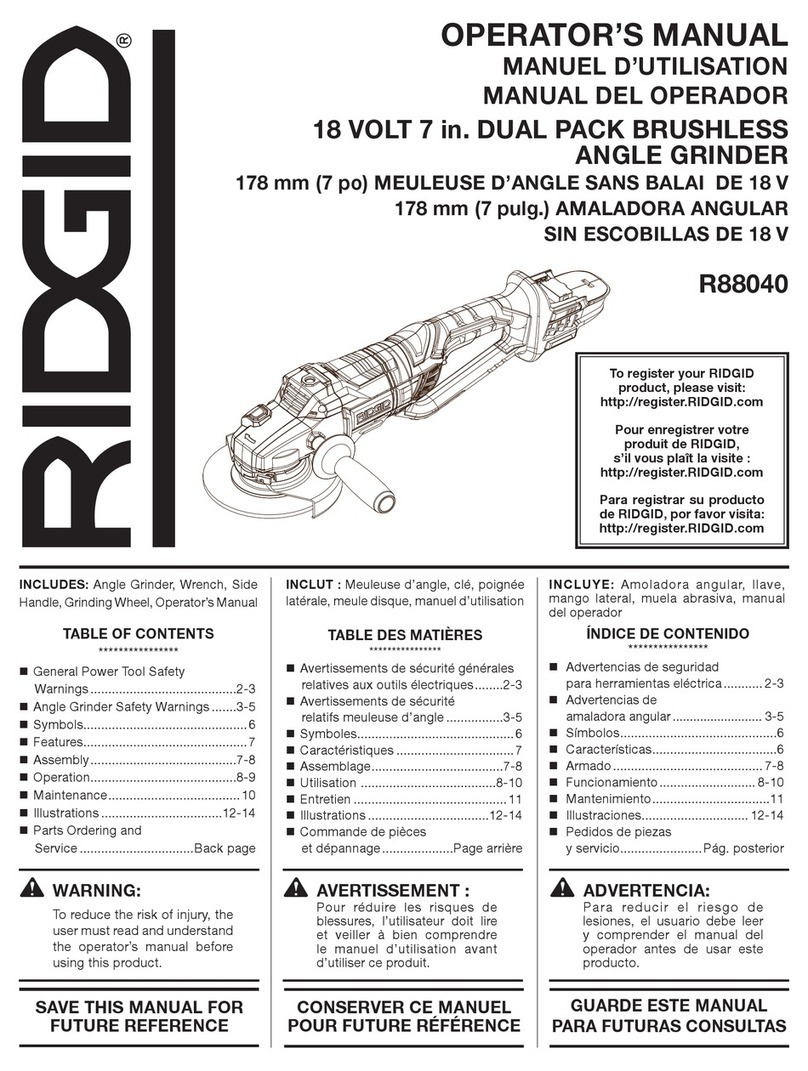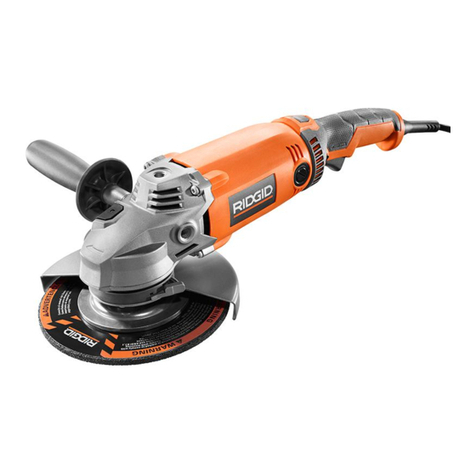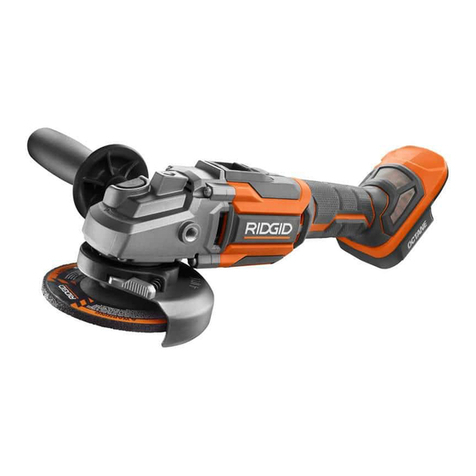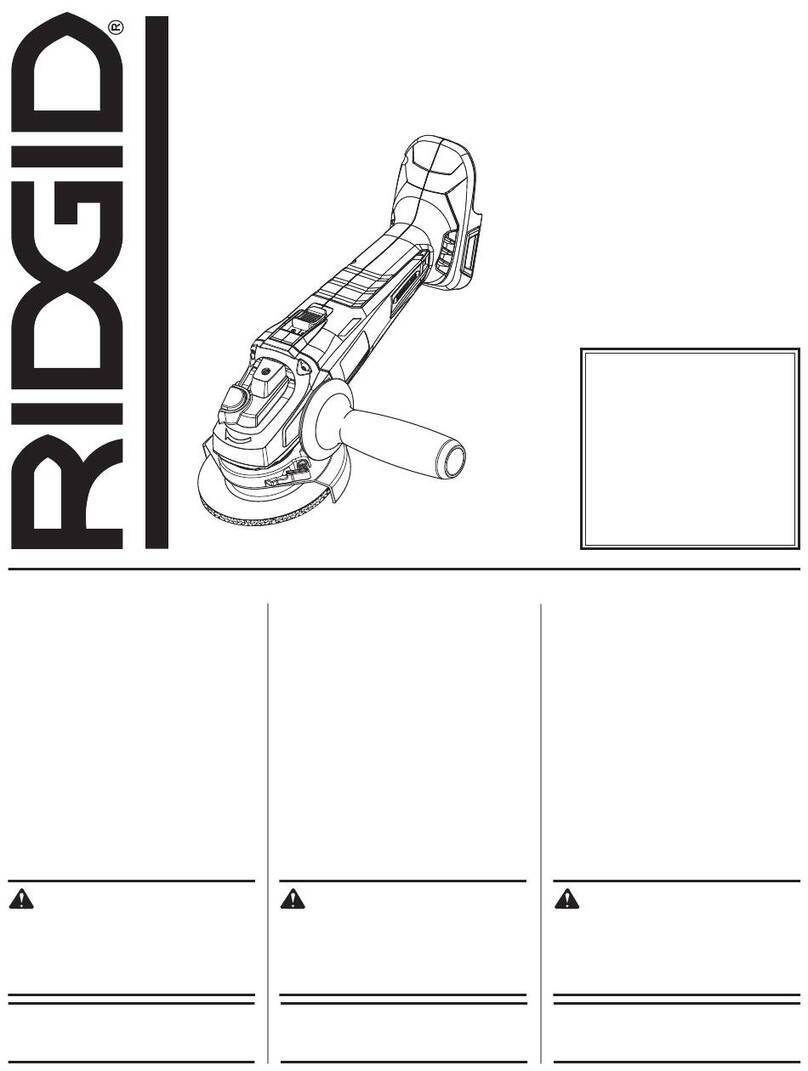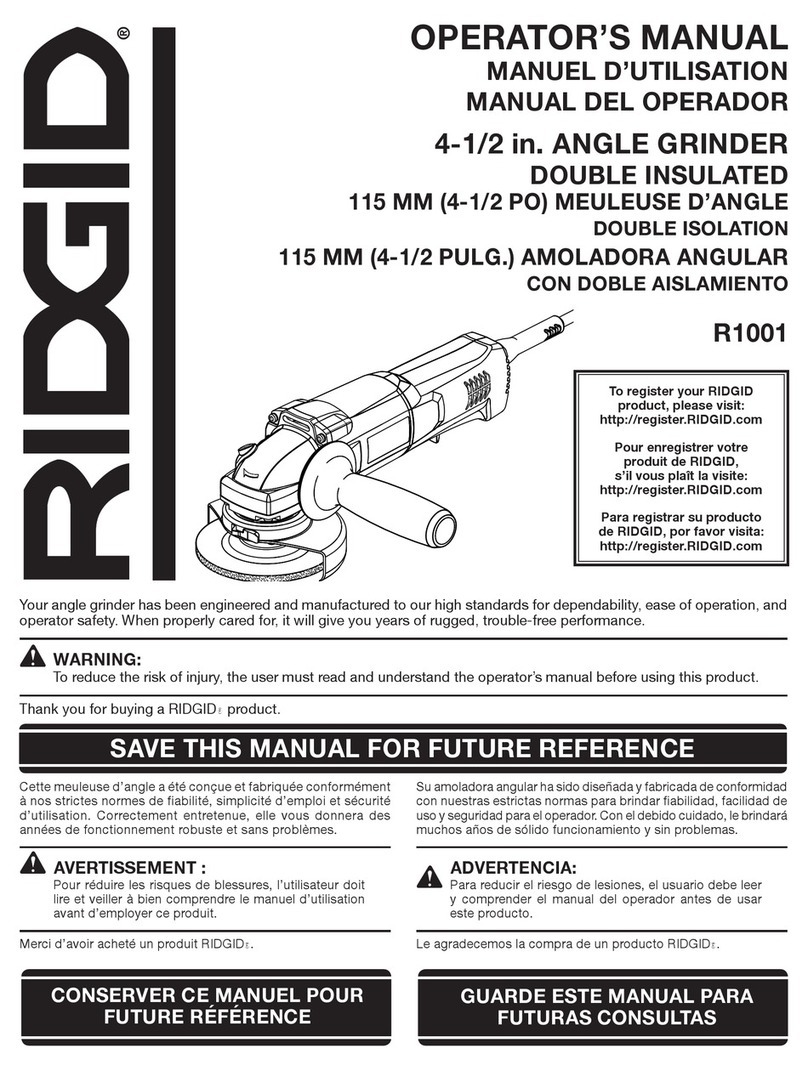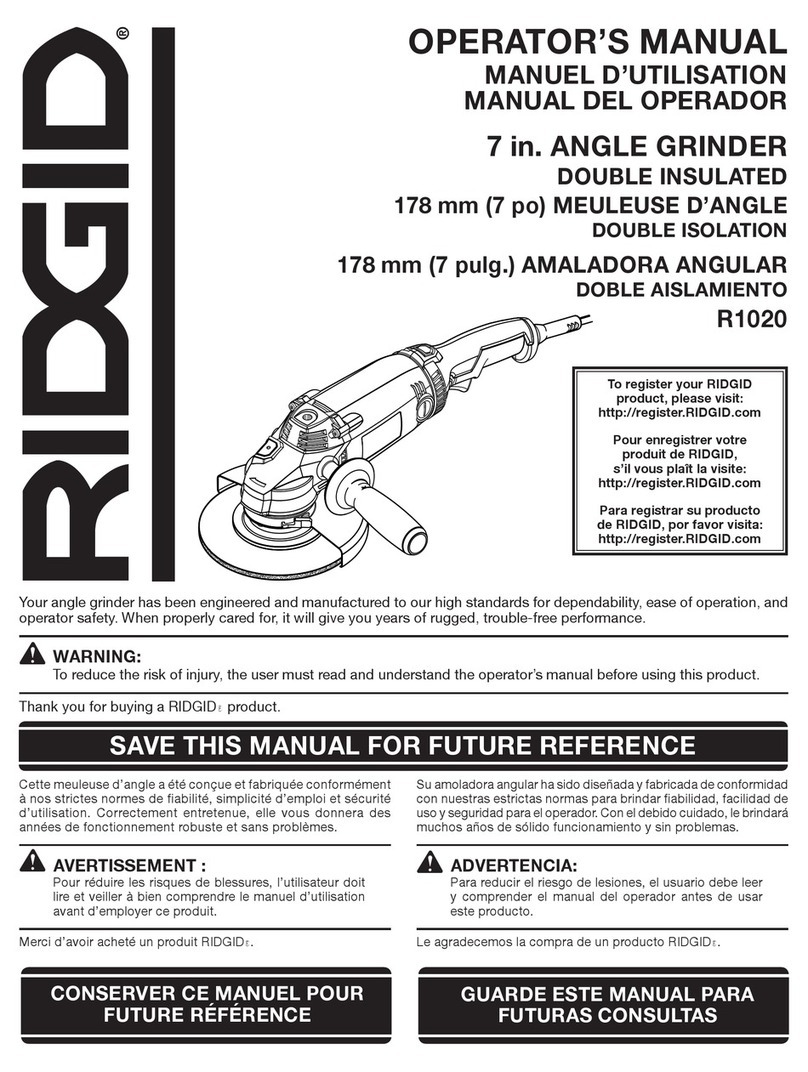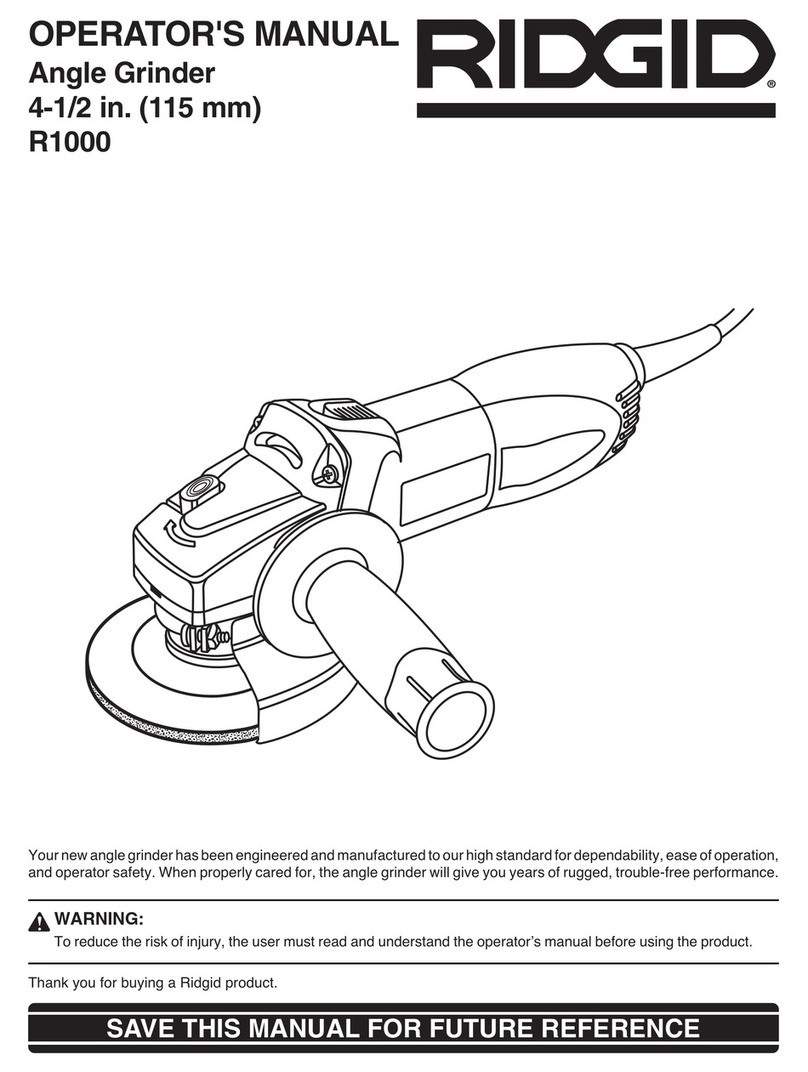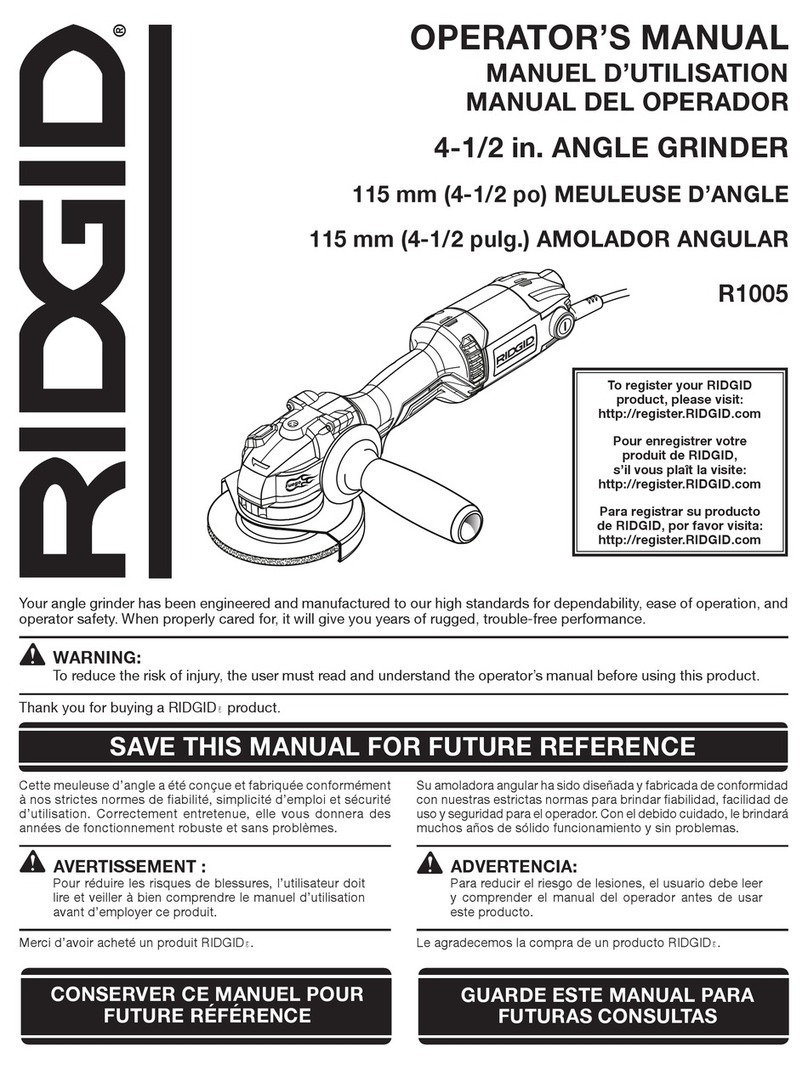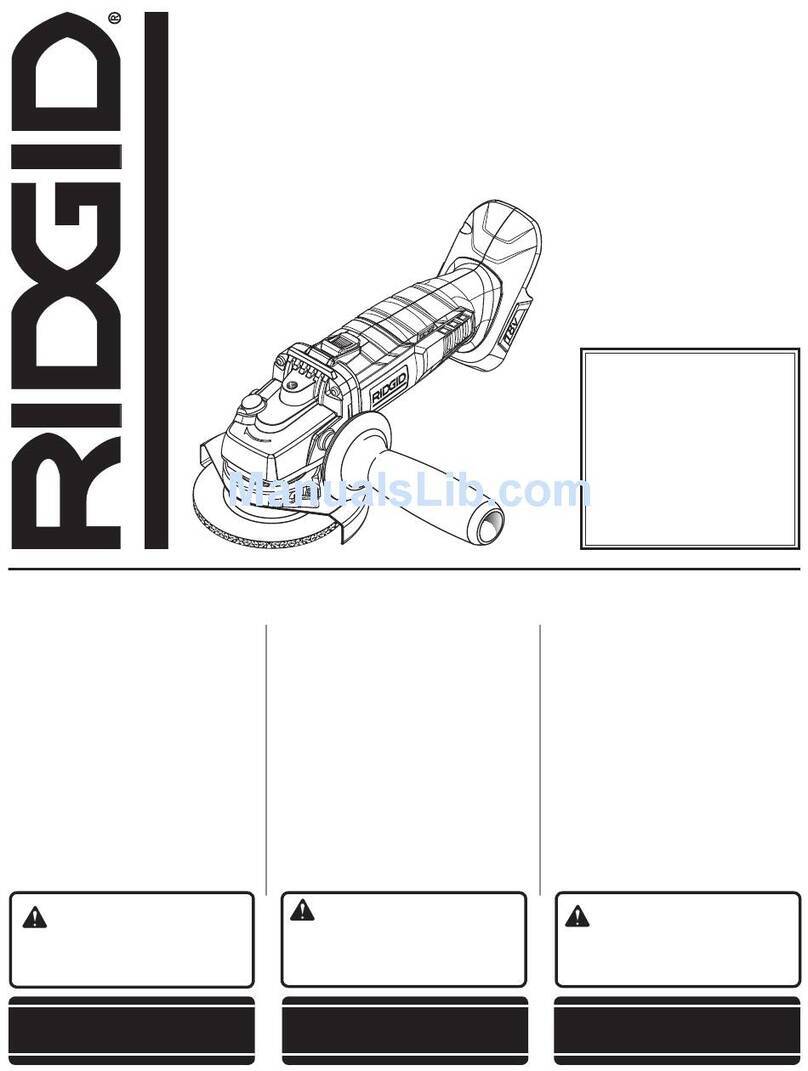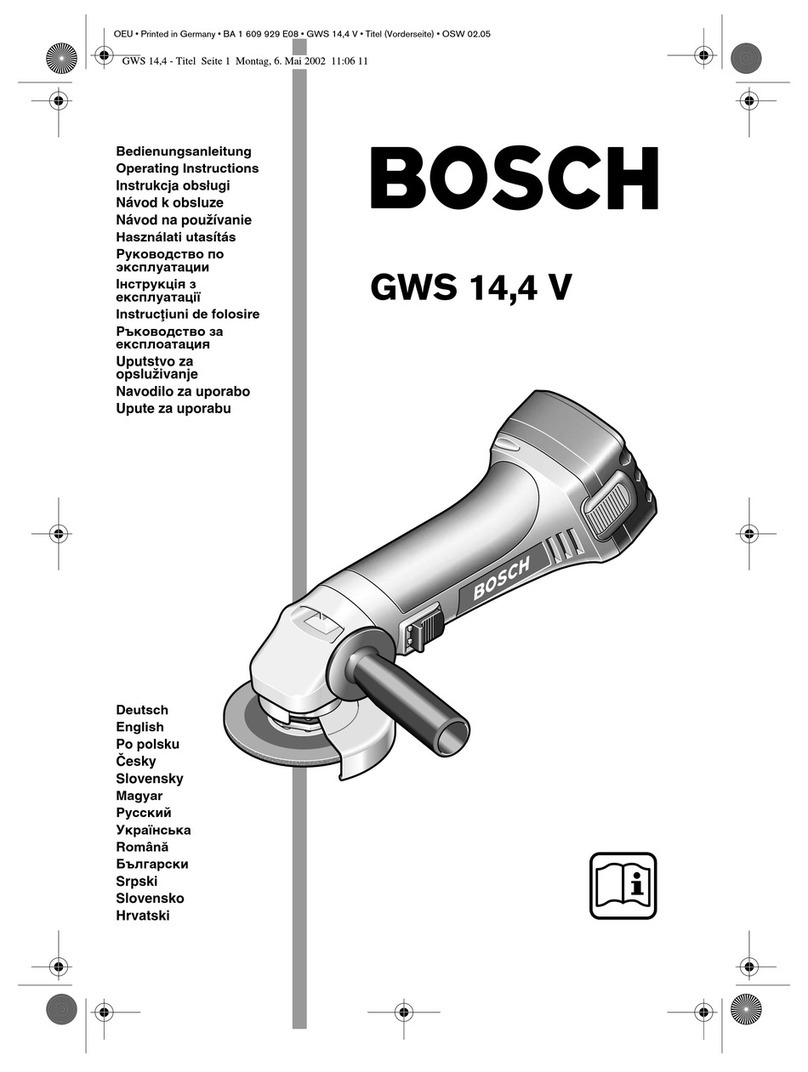
5 - English
ANGLE GRINDER SAFETY WARNINGS
KICKBACK AND RELATED WARNINGS
Kickback is a sudden reaction to a pinched or snagged
rotating wheel, backing pad, brush or any other accessory.
Pinching or snagging causes rapid stalling of the rotating
accessory which in turn causes the uncontrolled power tool
to be forced in the direction opposite of the accessory’s
rotation at the point of the binding.
For example, if an abrasive wheel is snagged or pinched by
the workpiece, the edge of the wheel that is entering into the
pinch point can dig into the surface of the material causing
the wheel to climb out or kick out. The wheel may either jump
toward or away from the operator, depending on direction
of the wheel’s movement at the point of pinching. Abrasive
wheels may also break under these conditions.
Kickback is the result of power tool misuse and/or incorrect
operating procedures or conditions and can be avoided by
taking proper precautions as given below.
Maintain a firm grip on the power tool and position
your body and arm to allow you to resist kickback
forces. Always use auxiliary handle, if provided, for
maximum control over kickback or torque reaction
during start-up. The operator can control torque
reactions or kickback forces, if proper precautions are
taken.
Never place your hand near the rotating accessory.
Accessory may kickback over your hand.
Do not position your body in the area where power
tool will move if kickback occurs. Kickback will propel
the tool in direction opposite to the wheel’s movement
at the point of snagging.
Use special care when working corners, sharp edges,
etc. Avoid bouncing and snagging the accessory.
Corners, sharp edges or bouncing have a tendency to
snag the rotating accessory and cause loss of control or
kickback.
Do not attach a saw chain woodcarving blade or
toothed saw blade. Such blades create frequent
kickback and loss of control.
SAFETY WARNINGS SPECIFIC FOR GRINDING
OPERATIONS
Use only wheel types that are recommended for your
power tool and the specific guard designed for the
selected wheel. Wheels for which the power tool was not
designed cannot be adequately guarded and are unsafe.
The guard must be securely attached to the power
tool and positioned for maximum safety, so the least
amount of wheel is exposed towards the operator.
The guard helps to protect operator from broken wheel
fragments and accidental contact with wheel.
Wheels must be used only for recommended
applications. For example: do not grind with the side
of cut-off wheel. Abrasive cut-off wheels are intended for
peripheral grinding, side forces applied to these wheels
may cause them to shatter.
Always use undamaged wheel flanges that are of
correct size and shape for your selected wheel.
Proper wheel flanges support the wheel thus reducing the
possibility of wheel breakage. Flanges for cut-off wheels
may be different from grinding wheel flanges.
Do not use worn down wheels from larger power tools.
Wheel intended for larger power tool is not suitable for
the higher speed of a smaller tool and may burst.
SAFETY WARNINGS SPECIFIC FOR SANDING
OPERATIONS
Do not use excessively oversized sanding disc
paper. Follow manufacturers recommendations,
when selecting sanding paper. Larger sanding paper
extending beyond the sanding pad presents a laceration
hazard and may cause snagging, tearing of the disc or
kickback.
SAFETY WARNINGS SPECIFIC FOR POLISH-
ING OPERATIONS
Do not allow any loose portion of the polishing bonnet
or its attachment strings to spin freely. Tuck away or
trim any loose attachment strings. Loose and spinning
attachment strings can entangle your fingers or snag on
the workpiece.
SAFETY WARNINGS SPECIFIC FOR WIRE
BRUSH OPERATIONS
Be aware that wire bristles are thrown by the brush
even during ordinary operation. Do not overstress the
wires by applying excessive load to the brush. The wire
bristles can easily penetrate light clothing and/or skin.
If the use of a guard is recommended for wire
brushing, do not allow any interference of the wire
wheel or brush with the guard. Wire wheel or brush
may expand in diameter due to work load and centrifugal
forces.
ADDITIONAL SAFETY RULES
Always use proper guard with grinding wheel. A guard
protects operator from broken wheel fragments.
Know your power tool. Read operator’s manual care-
fully. Learn its applications and limitations, as well
as the specific potential hazards related to this tool.
Following this rule will reduce the risk of electric shock,
fire, or serious injury.
Always wear eye protection with side shields marked
to comply with ANSI Z87.1. Following this rule will re-
duce the risk of serious personal injury.
Protect your lungs. Wear a face or dust mask if the
operation is dusty. Following this rule will reduce the
risk of serious personal injury.
Protect your hearing. Wear hearing protection during
extended periods of operation. Following this rule will
reduce the risk of serious personal injury.

